Hello I am having trouble with the work of finding the width of data bus and address bus as I have seen no tutorials show how to find out that information. I hope that someone can help me as my chip is Intel Core i7-6820HQ 2.7GHz. Here are some information about my chip.
- 328,167
- 45
- 605
- 847
- 5
- 2
1 Answers
Supported virtual and physical address widths can be queried with CPUID. How to get physical and virtual address bits with C/C++ by CPUID command
Related: Why in x86-64 the virtual address are 4 bits shorter than physical (48 bits vs. 52 long)? 52-bit is the theoretical max physical width an x86-64 CPU could support with the current page-table format. Even the highest of high-end Xeon and Epyc CPUs aren't quite there yet.
As for data bus widths, there are various internal busses between levels of cache, e.g. https://electronics.stackexchange.com/questions/329789/how-can-cache-be-that-fast/329955#329955 shows a Sandybridge. https://en.wikichip.org/wiki/intel/microarchitectures/skylake_(client)#Block_Diagram shows your Skylake, with bus widths inside the core, and the 32-byte ring bus.
These aren't things you can query from the CPU at run-time, you just have to look them up from information the vendor as released about that generation of CPU. (e.g. a chip conferences, in promotional material about all the ways their chips are better than ever, and in Intel's optimization manual: https://www.intel.com/content/www/us/en/developer/articles/technical/intel-sdm.html)
The external memory bus is dual channel DDR4, therefore 64 bits wide on each channel. (With separate address/command signal lines so it can pipeline commands.) https://en.wikipedia.org/wiki/DDR4_SDRAM#JEDEC_standard_DDR4_module . See also How much of ‘What Every Programmer Should Know About Memory’ is still valid? - the basic layout of DDR4 SDRAM is still the same as SDRAM, just higher clocks and some refinements in the commands, so the low-level details about DRAM in Ulrich Drepper's article about memory still apply. (e.g. sending addresses split into row/column, so changing row within the same DRAM "page" is faster.)
- 328,167
- 45
- 605
- 847
-
So is that the best answer to this question that the address bus i should answer the width of virtual and physical address ? – kaito kumon Nov 01 '22 at 15:36
-
@kaitokumon: I don't think there is a single physical "address bus". There are connections between cores, and between levels of cache. Any messages over those buses need to include an address. If there are dedicated wires for addresses on those buses (rather than just a message header), then yeah there are probably as many address wires as the CPU's supported physical address width. No less, and probably no more. Virt->phys translation happens inside a load/store port, so virtual addresses don't appear on any "bus". – Peter Cordes Nov 01 '22 at 21:40